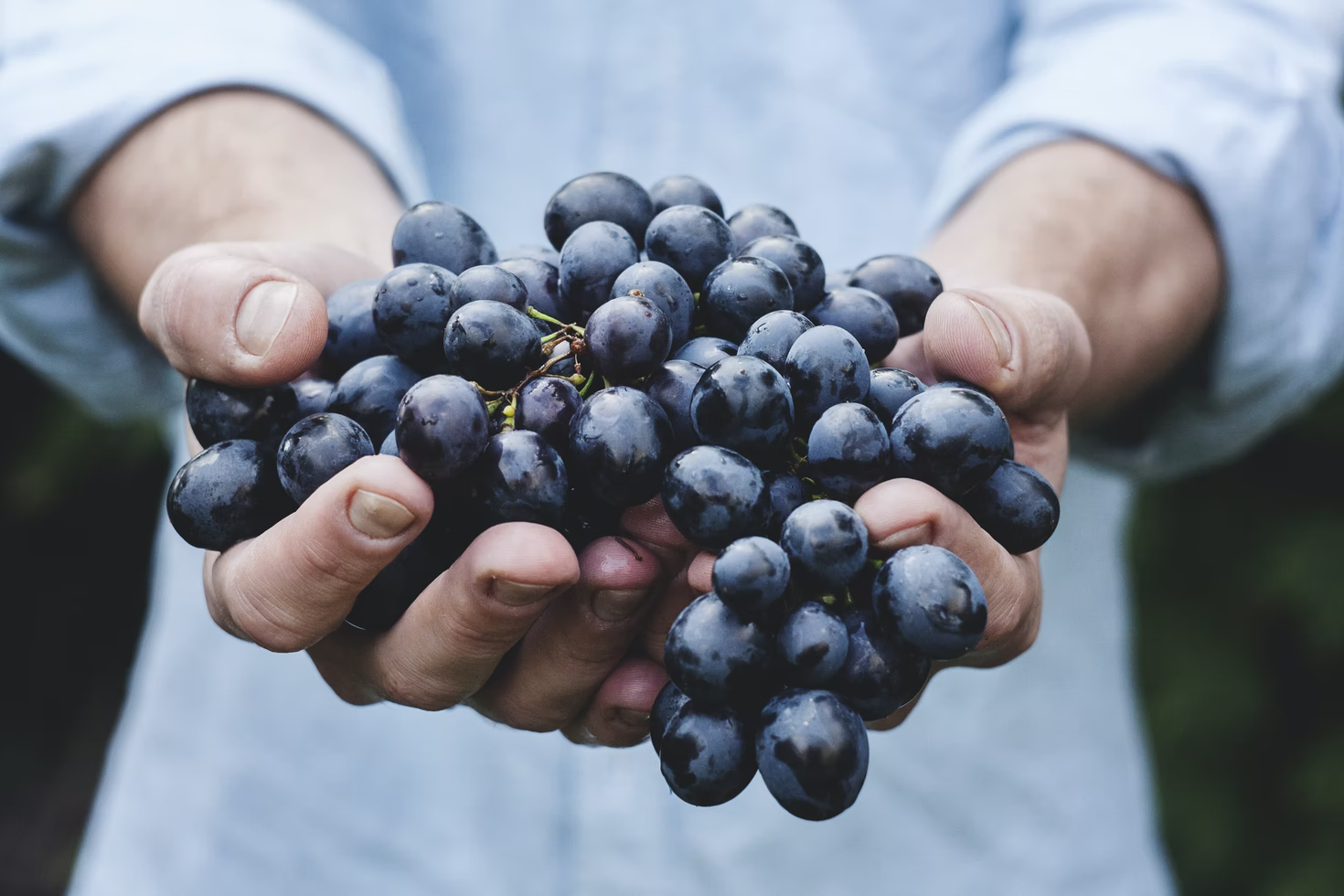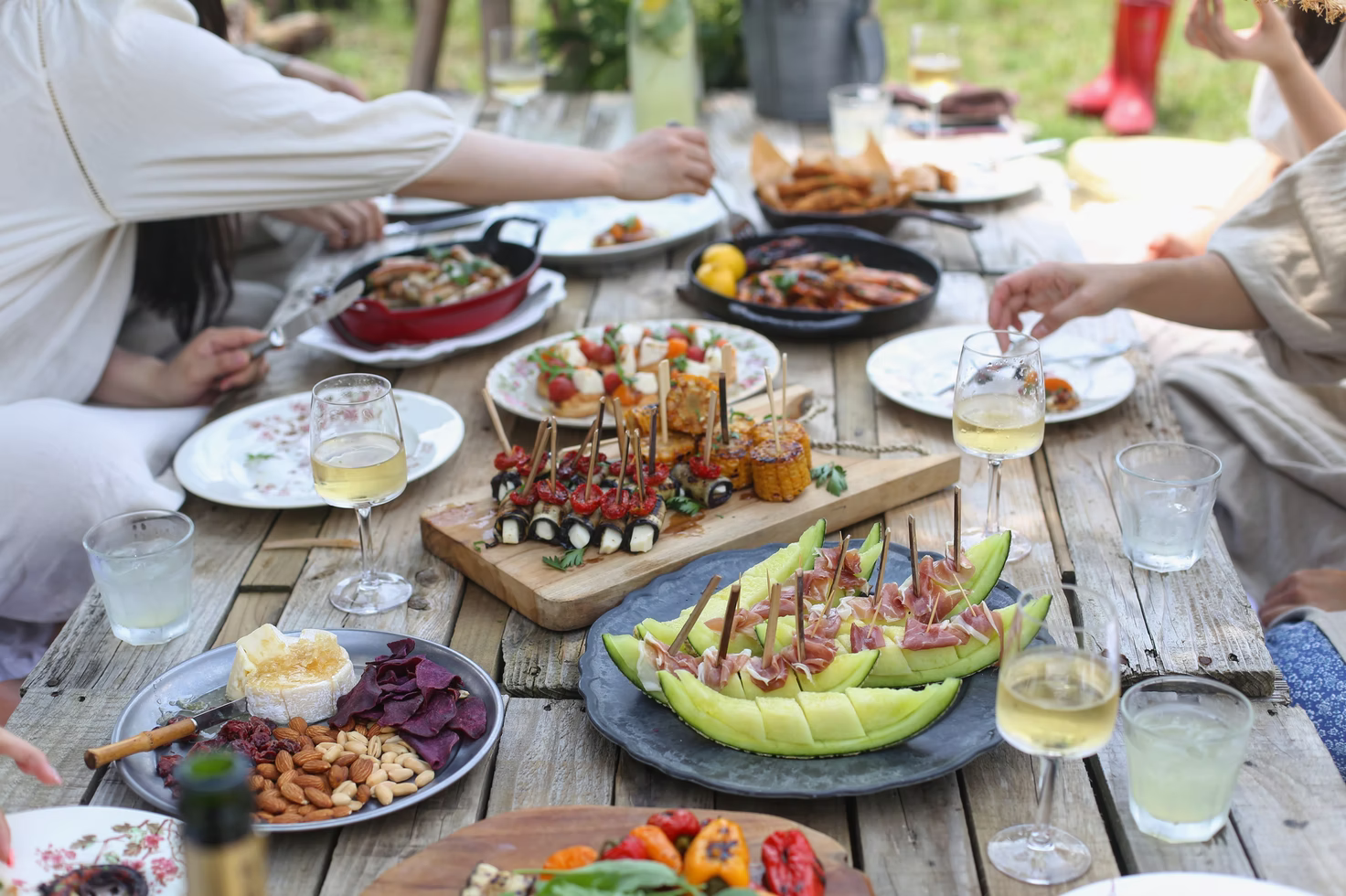Food By Suwannee
Yum Talay (Seafood Salad) – Suwanee’s Kitchen
Yum Talay-Every bite of this sumptuous seafood salad offers a taste-explosion of Thai flavors!
You can use any selection of seafood that you like for this simple popular Thai salad recipe. Note the seafood needs to be cooked before it is added to the salad. To blanch seafood, use just enough water sufficient for cooking. When cooked fish out the seafood with a wire mesh strainer. Reserve the cooking water to use for stock. If you are using crabs or lobsters, it is best to steam them.
Every bite of this sumptuous seafood salad offers a taste-explosion of Thai flavors! At the same time, the dressing never overpowers the fresh taste of the seafood, but rather brings out all of its natural succulence. While nearly every nation bordering an ocean has its own type of seafood salad, you’ll definitely find this Thai version to be one of the best!
In Thai cuisine, a yum is a hearty dish consisting mostly of meat, fish, or seafood, tossed just before serving with a simple mixture of fish sauce, fresh or dried chiles, lime juice, and herbs and often served atop a bed of salad greens. A yum is a stand-alone dish, perfect for a light main course or even an appetizer. The word yum refers to the action of combining an array of hot and tangy ingredients, and talay is the Thai word for ocean; thus, the mixed seafood version is called yum talay.
You can prepare the components in advance but be sure to yum the dressing and seafood right before serving—this is the key to keeping the vibrant flavors distinct.
24 small mussels
1 Tbs. table salt
3/4 lb. medium (51 to 60 per lb.) fresh shrimp, peeled and deveined
1/2 lb. cleaned squid, bodies sliced crosswise into 1/4-inch rings and tentacles cut in half if large
1/2 lb. sea scallops or bay scallops
1/4 lb. fresh or pasteurized jumbo lump crabmeat
6 Tbs. fresh lime juice (from 2 limes)
4-1/2 Tbs. fish sauce
1-1/2 Tbs. granulated sugar
2 tsp. finely chopped unseeded fresh hot green chiles (like serrano or jalapeño)
2 tsp. finely chopped garlic (2 medium cloves)
2 cups bite-size pieces of Boston lettuce, rinsed and spun dry (1 large head)
3 Tbs. thinly sliced shallot (1 large)
1/3 cup thinly sliced scallions (4 to 5, white and green parts)
1/4 cup coarsely chopped fresh cilantro
1/4 cup coarsely chopped fresh mint
1/2 cup sliced English cucumber (halve cucumber lengthwise and slice into 1/4-inch-thick half-moons)
1/2 cup halved cherry or grape tomatoes
Cook the seafood:Scrub the mussels well under running water and pull off any “beards.” Discard any mussels that don’t close tightly when tapped on the counter. Put closed mussels in a medium saucepan. Add about 1/2 cup water, just enough to cover the bottom of the pan by about 1/4 inch. Cover and set over high heat. Bring to a rolling boil and cook until the shells have opened, 1 to 2 minutes. Remove from the heat, transfer to a plate, and let stand until cool enough to handle. Discard any unopened ones. Remove the cooked mussels from their shells and put in a medium bowl; discard the shells and cooking liquid.To cook the remaining seafood, bring a 3-qt. saucepan of water to a rolling boil over high heat. Add the salt and let the water return to a boil. Pour the shrimp into the boiling water and cook until the largest one is pink on the outside, opaque on the inside, and just cooked through, about 2 minutes. The water may not return to the boil before they are done. Scoop them out with a slotted spoon and drop into the bowl with the mussels.After the water returns to a rolling boil, add the squid and cook just until they become firm and the rings turn bright white, about 1 minute. Scoop them out and drop them into the bowl along with the shrimp and mussels.
When the water returns to a rolling boil, cook the scallops until just cooked through and no longer translucent inside, 1 to 2 minutes for bay scallops, 2 to 3 minutes for sea scallops. Scoop them out and drop into the bowl as well (if using sea scallops, you may want to halve or quarter them first).
Add the lump crabmeat chunks to the bowl of seafood. Set the seafood aside on the counter while you prepare the dressing and other ingredients for the salad.
Make Ahead Tips
The seafood can be cooked up to 4 hours ahead and refrigerated, covered. Let it sit at room temperature for 20 to 30 minutes before dressing
Suwannee Thai Cooking Class Chiangrai Thailand
The cooking class at Suwannee is an ideal home-style learning environment that is different from most of the opportunities in the hotels and restaurants in Thailand. Not will you be only watch and participate in the cooking of a number of traditional Thai dishes; also as part of our course we visit a local market to learn about local exotic fruits and vegetables, there is always an abundance of new things to see……and taste!
Food By Suwannee
5 Best Organic Wines You Should Try For Any Occasion

It’s the time of the year when shopping trolleys are filled with organic wines, cheese, meats and festive snacks galore. Shoppers dashing about to grab their last-minute Christmas presents – many of us stumped for ideas. Where to buy from, what to buy, and for whom? It’s almost Christmas, of course, and as the festivities commence, you’re sure to be looking for the best wines to stock up on to quench the thirst of your yuletide guests.
Wine is a fundamental part of Christmas, from a Christmas Eve tipple to the perfect pairings on Christmas day – but have you considered stocking up on organic wine this festive period? Organic wines are great for any occasion, not just Christmas. Think summer picnics in the park, graduation celebrations, counting in the new year, or a cozy night in – you name it. There are frequent occasions when the wine is desirable and there are many reasons why you should consider adding organic wines to your shopping list for all of these occasions.
What is organic wine?
To be classed as organic, a wine must be produced using only grapes that have grown following organic farming rules. In general terms, the growth process must exclude artificial chemicals like fertilisers, fungicides, herbicides, and pesticides.
There often exists a certain amount of confusion around what constitutes an organic wine because sometimes grapes that are certified as organic don’t always produce organic wine. Additives can be added after the grape growth during the production process of the wine, which makes the wine non-organic.

Source: https://unsplash.com/photos/vGQ49l9I4EE
Also, a wine can be labelled as organic if it is at least 90% organic, meaning it can still contain up to 10% of additives – which are not organic. If you are looking for an authentic organic wine, one not filled with sulfites and other chemicals, then shop for certified organic wine or ones that are 100% organic. Rules and organic certification labels will vary between countries.
Let’s take a look at some of the very best organic wines on the market today, for Christmas and any other occasion.
Pizzolato Merlot
If you’re a red wine lover – then a top-rated Merlot is a must-try. Priced reasonably at $13, this wine is bright ruby red with a violet cast.
With rich aromas of chocolate, toasted coconuts, and grilled herbs marinated with sweet peppers along with a strawberry grape liqueur – Pizzolato Merlot starts on a supple entry, moving through the palate to a dry medium to full-bodied wine with notes of apples, clay and pencil.
Pizzolato Merlot is an exceptional table wine – perfect when served over the Christmas period or for many celebrations and occasions to come.
Basa Lore Txakoli Rose
Another organic wine, this time for the Rose lovers. This wine encapsulates the history of the Basque region; the perfect wine with 600 years of expertise and style to its name.

Source: https://unsplash.com/photos/02rhSkQndPw
Basa Lore Txakoli presents a traditional style, offering bright tastes and smells of prickly pears, sweet strawberries, apricots and refreshing mint – alongside a little fizz. This Rose is hard to resist and comes with a reasonable price tag of just $16, making it a must-have for your next big occasion.
Pairings of sushi, oysters, and octopus will set this Rose and your taste buds alight.
Frey Vineyards Biodynamic Field Blend
With character, vintage, and an authentic representation of Frey Vineyards at the heart of the creation of this biodynamic wine, you can rest assured that this red offers a 100% organic wine made with love.
 Source: https://unsplash.com/photos/aYKPc05ozp4
Source: https://unsplash.com/photos/aYKPc05ozp4
This red from California is farmed with nature, no pesticides added, and there is zero manipulation carried out in the cellar with only native yeast used in the fermentation process. Nothing stands between you and the organic grapes used to produce this stunning red.
With boysenberry and graphite accompanied by ripe blackberry and soft saddle leather, this wine will satiate your taste buds and leave you feeling good, (not guilty), about drinking wine over the festive period and any other occasion.
Purato Siccari Appassimento
This organic red is the perfect grab and go, often readily available at local stores whilst not comprising the organic certification. With a rich and complex structure from berry fruits, a touch of spice and incredible character to diverse fruits and a long finish, this wine heralds from three generations – and the experience shows in its exquisite taste.
An Italian red made from the Shiraz grape variety, this wine makes the perfect accompaniment to Christmas Eve mince pies, birthday celebrations or any other looming occasion. At 13.5% and purchasable around the $10 mark, it’s a must-grab.
Contevedo, Organic Cava
Perhaps you’re already dreaming ahead to longer, hotter summer days – thinking about the first BBQ of the year once Christmas is over and Spring days slowly appear. Well, we have the perfect organic wine for your next BBQ event.

Source: https://unsplash.com/photos/y1XXWct5rBo
A little fizz is often a favourite, but sometimes Champagne can come with a price tag a little too heavy for some occasions. Why not consider a Cava?
Contevedo Cava could be the perfect fizz for you. Think grilled shrimps and lobster paired perfectly with this delicious sparkling wine. A dry fizz with ripe peach and 100% organic, this Cava will have your guests, (and your wallet), singing your praises!
The Bottom Line
Whether you’re looking for a festive treat to serve up alongside your turkey, a wine to gift, a beverage to ring in the New Year with, or for any other occasion throughout the year, you can rest assured that there is an organic wine for you. A wine you can drink with ease and feel good, not guilty, about your consumption. Your wines are made with compassion, with no nasty chemicals added, and everything is organic. Sit back, grab a glass and relax as you enjoy the variety of organic wines on offer in today’s market. You’ll be thankful, your guests will be thankful, and your body will be too.
Food By Suwannee
What are the Best Dog Treats from Chewy Brands?

Owners’ love for their pets encourages them to be pampered. One way to make your dog feel good is to give him a tasty meal that is different from his daily food. Dog treats are made by many pet food companies.
Very popular dog food brands are Chewy, TiTBiT, Triol, Pro Pack, and others. They are of unsurpassed quality and dogs enjoy eating them with pleasure. You should not give them to your dog every day.
We should only give them if we have a good reason, otherwise treats will not be good for our dog’s health.
The portion of “goodies” in the dog’s diet should not be more than 1/10th. Pampering your dog is unnecessary because your dog will either refuse to eat healthy Chewy dog treats and food bestdogfood.expert.
Balanced pet nutrition will not give you the opportunity to gain weight. This should not be allowed to happen.
When Chewy dog treats are appropriate

If you have a reason to encourage your dog. When your four-legged friend behaves obediently, accurately performs all your commands, it is not a sin to praise him for it with dog treats.
Chewy Treats are actively used by professional dog trainers, particularly for hunting, service, and guard breeds. When preparing the dog to participate in the show, so he showed his best side, not only in exterior evaluation, treats are also in great use.
Dogs love to be praised and will be perfectly obedient if petted and given a treat for doing so.
At a time when the puppy is chewing on everything in the house – shoes, furniture and so on. With the help of a treat he can be weaned from this costly habit quite quickly.
Give him a treat in the shape of a bone, for example. He will do it for a few days and in time he will lose interest in your house slippers or your wife’s modelling shoes.
Treats containing vitamins and minerals are used as Chewy dog food from premium brands. They help boost his immunity and overall health. In addition, with their help, your pooch will clean his teeth of plaque, and the result will be improved oral health.
What kind of dog treat is right for your pet?

There are different types of treats available on the Chewy pet food market. They are available as semi-dry or dry, pressed or semi-moistened. These products differ not only in inconsistency but also in composition:
- Protein
- Carbohydrate
- Protein-carbohydrate
The sizes of treats are oriented to different breeds of dogs, so large animals they are large, and for small respectively small.
There is a huge variety of forms of dry treats for puppies who like to chew them. In this, manufacturers have outdone themselves. Babies are offered balls, bones, rings, cookies, etc.
For older dogs, soft treats in the form of slices, straws, chicken breast slices, rabbit fillets, sandwiches and more are optimal. Older dogs can enjoy soft treats like sandwiches, different slices, shreds and slices of chicken and duck breasts, rabbit fillet.
Don’t just choose treats according to the age and size of your four-legged pet, but also according to the occasion. In particular, if you go with your dog to the training, take dry delicacies in a paper bag or chopped ears (calf or pig). They won’t take up much room in your bag and won’t stain your clothes or car, even if they fall out of the package.
Cookie-shaped treats are used to strengthen your pet’s gums and sanitize his mouth. They are great for cleaning plaque and protecting against the nuisance of tartar in your dog.
Many dog owners give their pets homemade dog food; tasty treats as a reward – why not. With pre-made treats, you don’t have to waste time preparing them and, in addition, they are formulated by experts.
Keywords: how to make dog treats,dental dog treats,best dog training treats,dog treats best,dog treats recipe, healthy dog treats,natural dog treats,dog treats for training,homemade dog treats
Food By Suwannee
Chiangrai History One Bowl at a Time
- At popular eatery Nam Ngiew Pa Suk in Chiang Rai, where “Northern noodles” reign supreme, bowls of the garnet-colored dish, in pork or beef versions and with a gravy so unctuous it’s almost solid, go for 35 baht ($1) apiece.
CHIANG RAI – If Thais are chili aficionados in the south, gourmands in the center, and food daredevils in the northeast, then those in the north, an area ruled for centuries by warring empires, are culinary mixologists.
One of the area’s signature dishes — a heady mix of meat, noodles and aromatic herbs, topped with cilantro, bean sprouts and deep-fried slivers of garlic — encompasses everything distinctive about northern Thai cuisine.
Called “kanow jeen nam ngiew,” and lazily referred to by non-northerners as “Northern noodles,” the dish, like many others, is a complex fusion that tells a history of northern Thailand, ingredient by ingredient.
The fermented beans betray a hint of Chinese culinary influence, while the rice noodles come courtesy of the Mon, among the earliest tribes to settle in Thailand and Myanmar.
Sirichalerm Svasti, better known as Chef McDang, says the cuisine of the north was free to filch elements from neighboring China, Myanmar and India thanks to the distinct identity of the region once known as the Lanna, or a Million Rice Fields, Kingdom, which at its height included parts of Myanmar and Laos.
Nam Ngiew Pa Suk in Chiang Rai, where “Northern noodles” reign supreme“Northern Thai cuisine developed on its own since the Lanna Kingdom did not become part of Siam (Thailand) until much later,” said McDang, a well-known Thai television personality and author of scores of books on Thai cookery.
“The weather also plays an important role. Northern Thailand is cooler and mountainous,” he said. “There has always been an abundant supply of food and raw materials to cook with. And because it is cooler than the southern part of the country, the diet has more fat. You need more fat to keep you warm.”
Nam Ngiew Pa Suk in Chiang Rai, where “Northern noodles” reign supreme
That fat comes in the form of hunks of meat, rich with gelatinous flavor and stewed to the point of falling apart.
At popular eatery Nam Ngiew Pa Suk in Chiang Rai, where “Northern noodles” reign supreme, bowls of the garnet-colored dish, in pork or beef versions and with a gravy so unctuous it’s almost solid, go for 35 baht ($1) apiece.
HISTORY IN A BOWL
But northern Thai food is not only about keeping warm.
Like all Thai cuisine, it centers around rice, but the glutinous kind, served in wicker baskets to preserve its stickiness and accompanied by nam prik (pepper dip), gaeng (curry) and some sort of meat, deep-fried or in sausage form.
Northern Thailand is also known for a fearless attitude toward herbs and flowers: check out the spiny, broomstick-like ngiew blossom that lends “Northern noodles” their Thai name.
A shortage of coconut milk and seafood, common to the cuisines of other parts of the country, means an emphasis on richer flavors and much less fiery spices.
Unlike Thais, who flavor their curries and soups with fish sauce and kapi, or shrimp paste, the Chinese immigrants who came to the north in the 18th century brought with them a penchant for soy sauce and ginger, and a fondness for rotten beans.
“In traditional Thai cuisine, we use lots of shrimp paste, but traditional northern cuisine does not use very much,” said McDang. “They rely on fermented bean cakes — very Chinese.”
Northern food could also at times be called very Burmese.
A popular dish is khao gan jin, or rice wrapped in banana leaves cooked in pork blood, and imported from Myanmar, which ruled over parts of northern Thailand for 200 years.
But the heritage of what may be considered northern Thailand’s most famous dish remains shrouded in doubt.
The former Burma may or may not have contributed to khao soy — fresh egg noodles adrift in a thick coconut milk curry and garnished with deep-fried noodles, fresh shallots and pickled cabbage to cut the dish’s greasiness.
But most people agree the dish reflects the “melting pot” that is the north’s Chinese, Indian and Malay Muslim populations.
By Chawadee Nualkhair.
Learn to Cook Northern Thai Food
The cooking class at Suwannee is an ideal home-style learning environment that is different from most of the opportunities in the hotels and restaurants in Thailand. Not will you be only watch and participate in the cooking of a number of traditional Thai dishes; also as part of our course we visit a local market to learn about local exotic fruits and vegetables, there is always an abundance of new things to see……and taste!
Suwannee Thai Cooking Class Chiangrai Thailand
Suwannee Kwan Cheablam – [email protected] – Food by Suwannee
-

 News3 years ago
News3 years agoLet’s Know About Ultra High Net Worth Individual
-
Entertainment2 years ago
Mabelle Prior: The Voice of Hope, Resilience, and Diversity Inspiring Generations
-

 Health3 years ago
Health3 years agoHow Much Ivermectin Should You Take?
-

 Tech2 years ago
Tech2 years agoTop Forex Brokers of 2023: Reviews and Analysis for Successful Trading
-

 Lifestyles2 years ago
Lifestyles2 years agoAries Soulmate Signs
-

 Movies2 years ago
Movies2 years agoWhat Should I Do If Disney Plus Keeps Logging Me Out of TV?
-

 Health3 years ago
Health3 years agoCan I Buy Ivermectin Without A Prescription in the USA?
-

 Learning2 years ago
Learning2 years agoVirtual Numbers: What Are They For?
